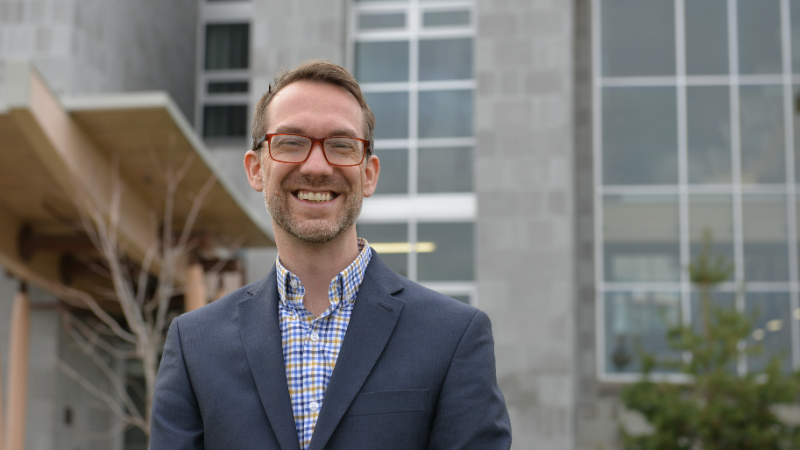Study shows higher doses of precision radiotherapy safe for patients
Through his SABR-5 trial, Northern Medical Program researcher Dr. Rob Olson looked at ways to minimize patient side effects from SABR, an innovative high-dose radiation treatment delivered to multiple tumour sites.

In his latest published research, Dr. Rob Olson, UBC Northern Medical Program associate professor, found patient side effects from an innovative cancer treatment that delivers higher doses of radiation over less treatments can be minimized, while still remaining effective at controlling cancer spread, through his SABR-5 trial.
SABR is a form of high-precision cancer therapy that delivers substantially higher doses of radiation to tumour sites in just one or a few treatment sessions. Olson is leading an ongoing phase III international trial titled SABR-COMET-3 investigating whether this treatment can improve the survival of, and potentially cure, certain patients.
“An earlier, smaller phase II trial in 2019, called SABR-COMET, showed encouraging results with people living two times longer than those who did not receive the treatment,” said Dr. Olson, who is also division head of Radiation Oncology and Developmental Radiotherapeutics, Department of Surgery, UBC Faculty of Medicine; affiliate faculty member, UNBC; and radiation oncologist and research lead at BC Cancer – Prince George. “However, there was three times the rate of side effects in those who received SABR, including a 30 per cent rate of mild side effects; approximately 15 per cent rate of serious side effects, for example, requiring hospitalizations; and a five per cent death rate from side effects. Therefore, we wanted to test if we could deliver SABR in a safer, yet equally effective manner with our SABR-5 trial.
“We specifically sought to determine if a large, coordinated provincial program, with several quality and safety mechanisms in place, could keep the side effect rate very low. We had also wanted to demonstrate that SABR can be safe, while still achieving high rates of tumour control, before we moved on to the larger SABR-COMET-3 randomized trial that we are currently running internationally from Prince George.”
The SABR-5 trial specifically looked at the effects of SABR treatment as provided to patients whose cancer had spread from the original location (e.g. prostate, lung) to one to five new sites (e.g. bone, liver).
“This research is important as it showed that in a coordinated program with safety checks in place, the side effects from SABR are low, with serious side effects less than five per cent and 0.3 per cent death rate from side effects, while the control of the cancer spread is high, 90 per cent,” noted Dr. Olson. “This trial also gave specific information on which body parts required more caution and study when treating, such as the liver and adrenal glands.”
The study, "Treatment with Stereotactic Ablative Radiotherapy for Up to 5 Oligometastases in Patients with Cancer - Primary Toxic Effect Results of the Nonrandomized Phase 2 SABR-5 Clinical Trial", was recently published in JAMA Oncology, an international peer-reviewed medical journal.
“This study, and the current SABR-COMET-3 trial, are run from the BC Cancer – Prince George centre,” added Dr. Olson. “We are currently planning for a new, even larger international clinical trial to follow, which is a complex process as such large trials are not funded by standard government operating funds and require grant funding and community donation support.”
The current SABR-COMET-3 trial is supported through funding from the Canadian Institutes of Health Research, Varian Medical Systems, and the BC Cancer Foundation.
